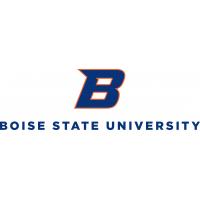Abstract
Accurate predictions of ecological restoration outcomes are needed across the increasingly large landscapes requiring treatment following disturbances. However, observational studies often fail to account for nonrandom treatment application, which can result in invalid inference. Examining a spatiotemporally extensive management treatment involving post-fire seeding of declining sagebrush shrubs across semiarid areas of the western USA over two decades, we quantify drivers and consequences of selection biases in restoration using remotely sensed data. From following more than 1,500 wildfires, we find treatments were disproportionately applied in more stressful, degraded ecological conditions. Failure to incorporate unmeasured drivers of treatment allocation led to the conclusion that costly, widespread seedings were unsuccessful; however, after considering sources of bias, restoration positively affected sagebrush recovery. Treatment effects varied with climate, indicating prioritization criteria for interventions. Our findings revise the perspective that post-fire sagebrush seedings have been broadly unsuccessful and demonstrate how selection biases can pose substantive inferential hazards in observational studies of restoration efficacy and the development of restoration theory.
Methods
The provided datasets contain randomly selected locations (using the sp package in R) that were identified using a combination of:
1) Areas that burned in one wildfire between 1985-2005, according to the Monitoring Trends Survey Dataset
2) Areas that either received (treated_sagebrush_locations) or did not receive (untreated_sagebrush_locations) post-fire seeding treatments for at least one Artemisia species on BLM across the Great Basin (USA), according to the Land Treatment Digital Library
For each location, using the raster package in R, we extracted or calculated sagebrush cover across the period before and after fires (as described in the manuscript) using the RCMAP product, elevation, soil percent clay and sand (using a product aggregating the USDA-NCSS SSURGO and STATSGO datasets), heatload, the U.S. Environmental Protection Agency’s Level III ecoregion, fire size, and distance to a major road from the U.S. Census Bureau’s TIGER database. We calculated various seasonal mean temperatures and mean total precipitation values for the period for between 1984-2014 for each location, using the gridMet modeled meteorological dataset. GridMet contains daily, high-spatial resolution (4-km) climate estimates for the contiguous U.S. from 1979 to present. Specific variable names are described below, and full citations for each described data product can be found in the associated manuscript.
The "source data" file contains the data used to generate the figures found in our associated manuscript. See https://github.com/absimler/nonrandom-seedings for details about figure development.
Usage Notes
This dataset is an initial set of locations identified using the criteria described above. However, these data were subsetted to a smaller set of 20,000 randomly selected locations that did not contain missing values for any of the variables required in the subsequent analysis. The full procedure for this subsetting is contained in the associated Github repository (https://github.com/absimler/nonrandom-seedings).
Data and Resources
| Field | Value |
|---|---|
| Modified | 2023-08-31 |
| Release Date | 2022-09-14 |
| Publisher | |
| Identifier | 7fc328a7-3f27-4f29-98be-27f13b4640e0 |
| Language | English (United States) |
| License | |
| Author | |
| Contact Name | Allison Simler Williamson |
| Contact Email | |
| Public Access Level | Public |
| DOI | 10.25338/B8W63R |


![[Open Data]](https://assets.okfn.org/images/ok_buttons/od_80x15_blue.png)